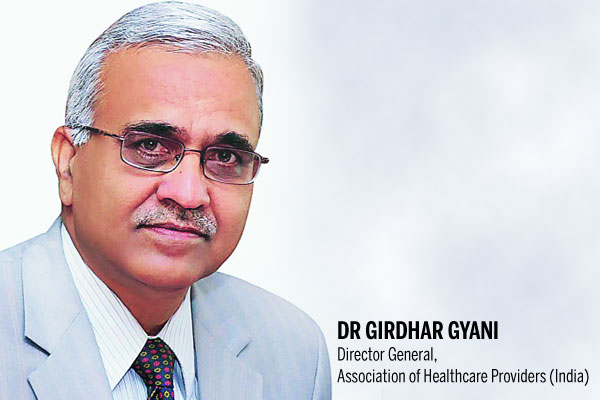The nation’s progress has many indicators. Human Development Index (HDI) is one such indicator. India has poor track record as far as HDI score is concerned. Presently, India is ranked 131 out of 188 nations on HDI, in which healthcare and education are two main contributing factors. Every government in the past has spoken about implementing universal health coverage (UHC), to provide health cover to every citizen without undue financial burden. Sadly, we are nowhere near such a situation.
The NDA government in its manifesto had announced the National Health
Assurance Mission. On August 15, 2016, the PM announced National Health
Protection Scheme (NHPS). MoH&FW is working on it and we hope it gets rolled out soon, under which all BPL population will get cover of one-lakh per family. It will be a substantial hike over Rashtriya Swasthya Bima Yojna (RSBY), which
has a cover limited to Rs 30,000. This will be a major achievement of the Modi
government.
The second achievement has been to bring out the National Health Policy, which has set in good initiatives including increase of GDP contribution progressively to 2.5 per cent. The government is seen to be acting on making healthcare affordable. Recent capping of stent and ortho implants price points in that direction. Similarly emphasis on providing cheaper medicines through chain of Jan Aushadhi stores has been hailed as a good step.
Reforms in health systems are closely linked with reforms in medical/nursing education of country. We had hardly 15000 PG seats against 50,000 of MBBS seats. This had resulted in huge shortage of specialists in the country. Official records show that there are more than 70 per cent vacancies in government CHCs, due to which India has a poor track record of IMR/MMR. The government has gradually increased PG seats in medical colleges and also through DNB programmes and now we have more than 20,000 PG seats. Recently, the government has taken a major step in recognising diploma programme run by College of Physicians and Surgeons, Mumbai in the entire country. This will enable large number of MBBS doctors to acquire an on-job diploma in various specialities in two years. This will have a huge impact in making good the shortage of specialist doctors. The government has moved the NMC bill in the Parliament to replace MCI. It will hopefully ensure an open and productive medical education system.
On the negative side, government has not been able to discourage violence against doctors. Knowing well that the private sector had invested about 3.7 per cent of GDP in healthcare as against 1.2 per cent by the government, it is the duty of the government to look after private sector doctors. Most government insurance schemes like CGHS, ECHS and ESI are operated through private hospitals; so is the case with state-run insurance schemes. A recent study shows that the government in Karnataka was reimbursing only 30-60 per cent of actual cost incurred by private hospitals on various schemes. This has pushed private hospitals to stage un-sustainability as against the perception that private hospitals were profiteering. The government must take private sector as a partner in letter and spirit and the two together can result in happy and healthy India.
- Advertisement -



Comments are closed.